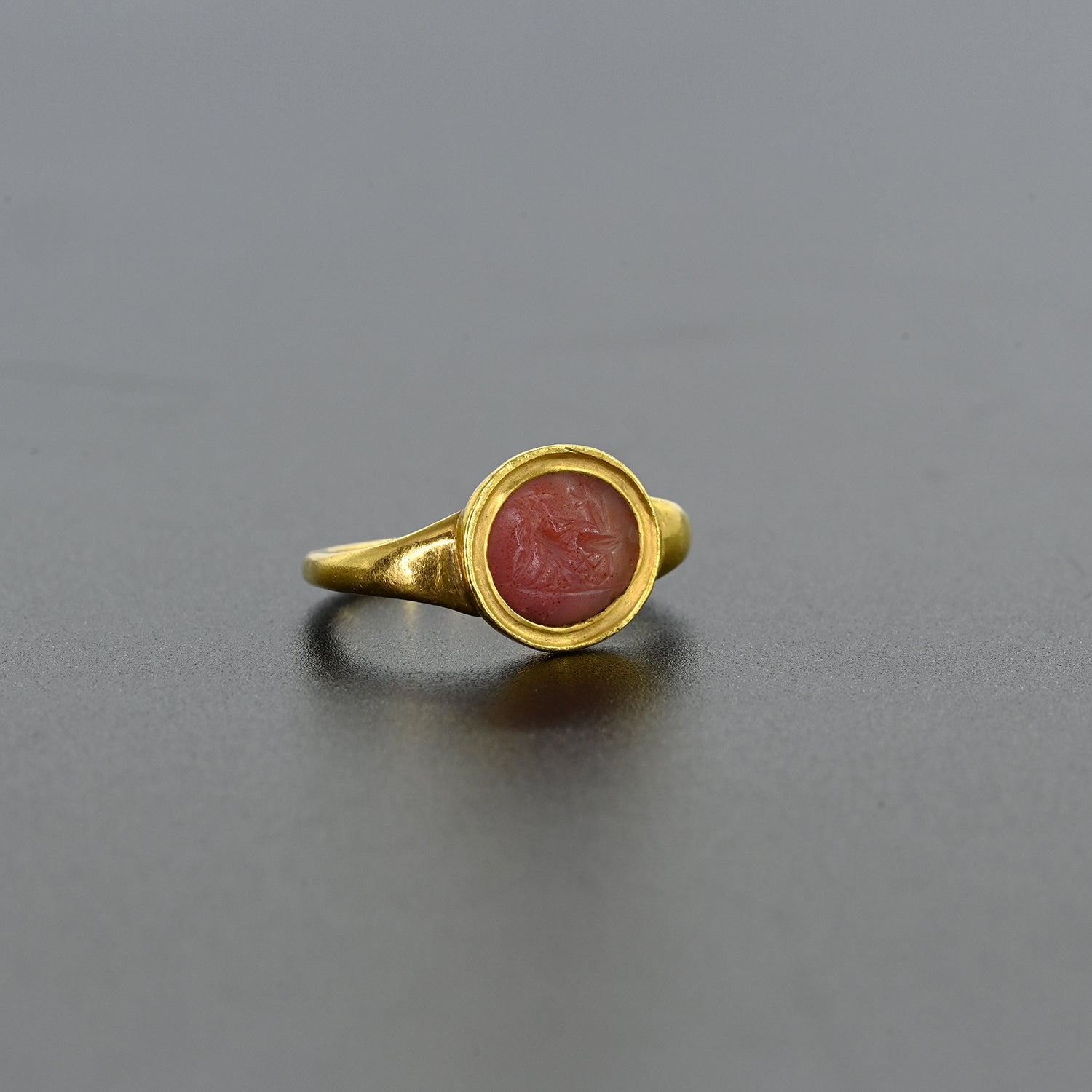
A Roman Carnelian Intaglio Ringstone, Roman Imperial Period, ca. 1st century CE
The well carved motif on this intaglio gem depicts a mouse driving a chariot (biga) pulled by two roosters. In religious contexts, the rooster symbolizes vigilance and the divine. Linked to the god Mithras in Roman mystery religions, its crowing at dawn represents awakening and the triumph of light over darkness. The rooster was also considered a protective figure, believed to ward off evil spirits and bad omens. Conversely, the motif of the mouse, while less prominent than that of the rooster, also held significance. The Latin word "musculus," which means both "little mouse" and "muscle," highlights a unique linguistic and cultural understanding. This dual meaning illustrated a connection between physicality and a concept of smallness or weakness. An intaglio gem featuring a mouse and roosters illustrates how these motifs can be symbolically intertwined. The rooster may symbolize good luck or prosperity, while the little mouse suggests an allegorical meaning: regardless of size, one c